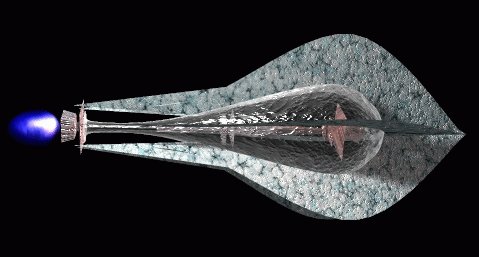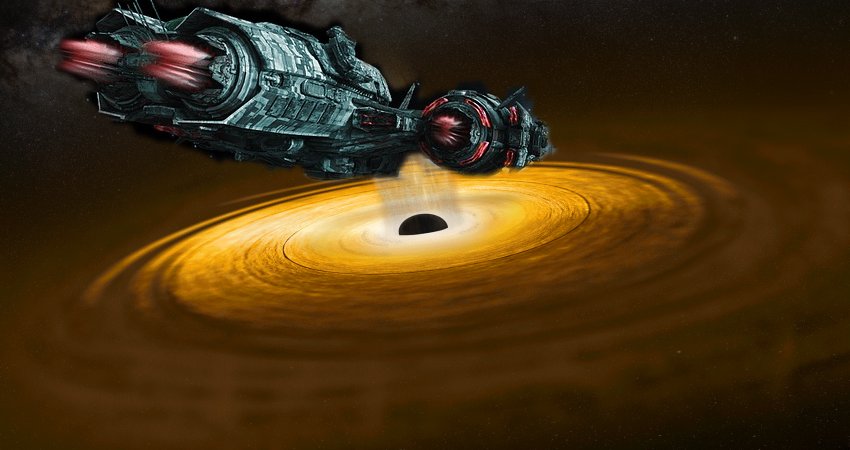A Fleet Of Extraterrestrial Probes Might Watch Our Galaxy – Researchers Suggest
MessageToEagle.com – If there is a large fleet of extraterrestrial probes watching our galaxy, the Milky Way would we even be able to detect them?
What reasons could a highly advanced alien civilization have to place probes in orbit around our solar system and across the whole galaxy?
In science fiction, the search for inhabitable worlds has been immortalized on TV by heroic captains boldly commanding a lone star ship, or as the murderous Borg, a Type III civilization which absorbs lower Type II civilization (such as the Federation). However, the most mathematically efficient method to explore space is far less glamorous: to send fleets of “Von Neumann probes” throughout the galaxy (named after John Von Neumann, who established the mathematical laws of self-replicating systems).
A Von Neumann probe is a robot designed to reach distant star systems and create factories which will reproduce copies themselves by the thousands.
A dead moon rather than a planet makes the ideal destination for Von Neumann probes, since they can easily land and take off from these moons, and also because these moons have no erosion.
These probes would live off the land, using naturally occurring deposits of iron, nickel, etc. to create the raw ingredients to build a robot factory. They would create thousands of copies of themselves, which would then scatter and search for other star systems.

Similar to a virus colonizing a body many times its size, eventually there would be a sphere of trillions of Von Neumann probes expanding in all directions, increasing at a fraction of the speed of light. In this fashion, even a galaxy 100,000 light years across may be completely analyzed within, say, a half million years.
If a Von Neumann probe only finds evidence of primitive life (such as an unstable, savage Type 0 civilization) they might simply lie dormant on the moon, silently waiting for the Type 0 civilization to evolve into a stable Type I civilization.
After waiting quietly for several millennia, they may be activated when the emerging Type I civilization is advanced enough to set up a lunar colony.
Physicist Paul Davies of the University of Adelaide has even raised the possibility of a Von Neumann probe resting on our own moon, left over from a previous visitation in our system aeons ago.
In a recent paper, Arwen Nicholson and Duncan Forgan take the idea a step further by exploring three different scenarios of probe behavior: using standard powered flight, using gravitational slingshot techniques around stars, and hop scotching star-by-star to get the maximum speed boost under slingshot trajectories.
“Interstellar probes can carry out slingshot manoeuvres around the stars they visit, gaining a boost in velocity by extracting energy from the star’s motion around the Galactic Centre.
These maneouvres carry little to no extra energy cost, and in previous work it has been shown that a single Voyager-like probe exploring the galaxy does so 100 times faster when carrying out these slingshots than when navigating purely by powered flight. We expand on these results by repeating the experiment with self-replicating probes.
The probes explore a box of stars representative of the local Solar neighbourhood, to investigate how self-replication affects exploration timescales when compared with a single non-replicating probe, “the team writes in their paper.
“From the scaling of the probes’ performance with star number, we conclude that a fleet of self-replicating probes can indeed explore the galaxy in a sufficiently short time to warrant the existence of the Fermi Paradox,” the researchers say.

If probes might have visited our solar system and we have been too optimistic regarding our ability to detect the probes. The scientists suggests that objections to the existence of extraterrestrial intelligence based on the Fermi Paradox are invalid, as they are based on unsupported assumptions that ETI or their artifacts are not currently present in our Solar System.
Humanity’s ignorance to potential evidence of ETI is not and any objects sent by aliens not intended to be found, will not be found.
An alien probe could camouflages itself and set up a threshold test of the technology or intelligence of the recipient species, where the test must be met before the species is allowed to communicate with the device.
Evidence in the form of ‘spent’ or destroyed probes is less likely, as any civilisation attempting interstellar exploration are presumably skilled engineers, and would send probes with the ability to self-repair due to the large travel distances and times required for such a task , giving the probes a very long life-span.
Then there is the intriguing question why extraterrestrials would like to place probes in various locations of the galaxy. If exploration probes are continuously traveling at maximum speed and constantly dispersing radially across the galaxy. Predators would have a hard time catching their prey. Light travel delay times would squelch communication. This means that all probes would know exactly where every other probe has been and is heading. Each probe could leave behind an omnidirectional beacon that emits a signal showing the star has been visited. Or probes could deposit a “captain’s log” for other probes to readout.
In other words, such extraterrestrial probes would lurk in potentially habitable planetary systems, to wait for signs of intelligent life in order to collect data.
At the end, the data collected by the entire fleet could be placed into a giant galactic archive. It would be a resource for all interstellar civilizations that are smart enough to find it, enter the correct password, and download survey data on many billions of star systems.
MessageToEagle.com










